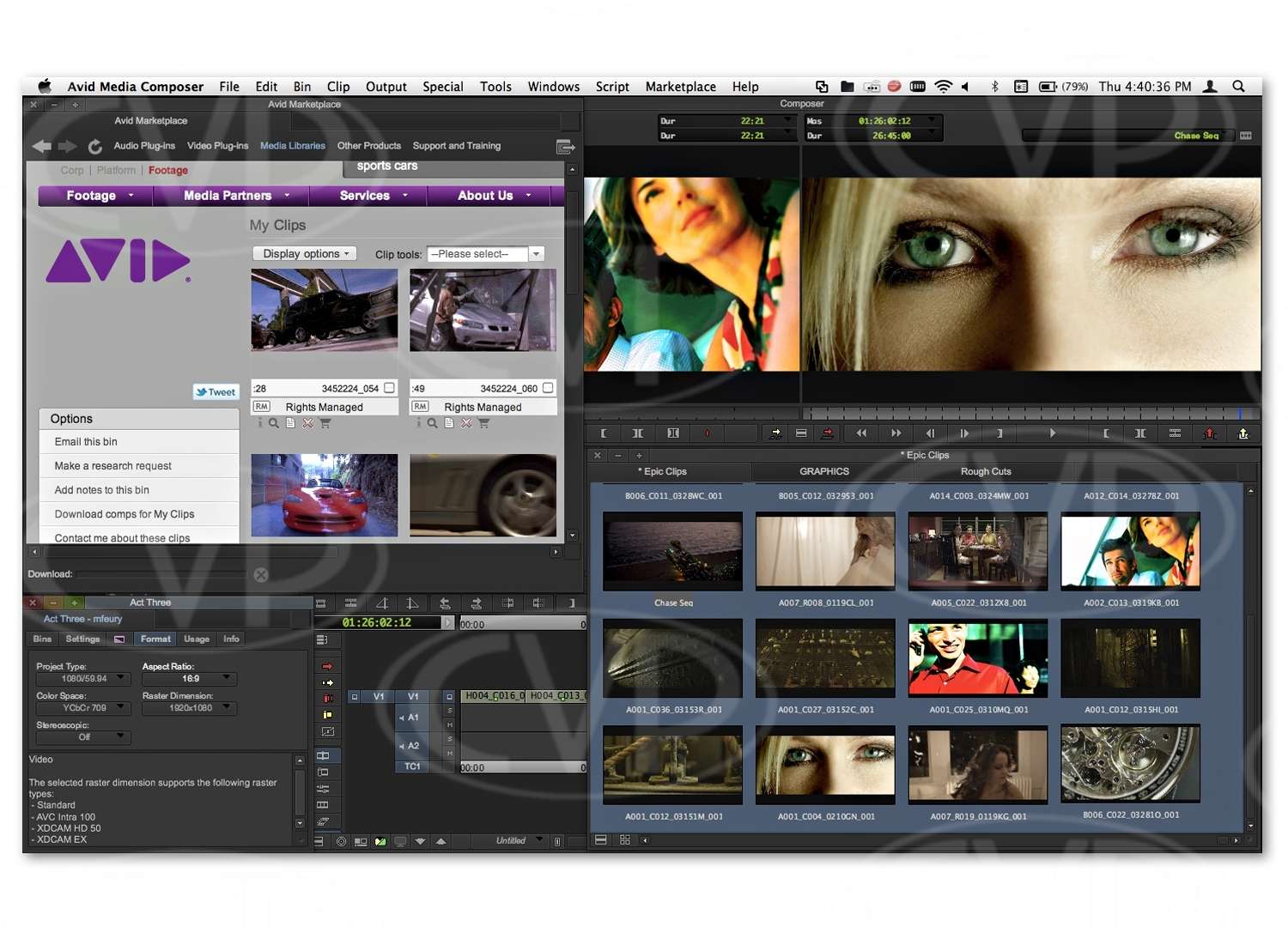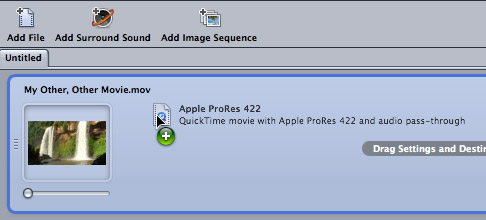

Despite some competition from Avid, the gap left by Adobe’s hiatus from video editing on the Mac platform has allowed Final Cut to flourish. Few would argue it is currently the dominant program for Mac-based video editing. What started as a single video editing program: Final Cut Pro, is now part of one of the largest video production bundles available: Final Cut Studio.
The Final Cut Studio package offers an incredible bundle of applications for the asking price; able to take users of all aspirations from raw footage, all the way to delivery on literally any platform needed (film, HD, DVD, DV, web etc). However, that was already the case in version 1 of the suite. So what is version 2 bringing to the party?
Both versions play just fine, but now it's time to burn to DVD.  I was not going to burn a blue ray just yet, so a SD DVD should be just fine. I was going to use Toast/ DVD Studio Pro on my mac 10.5.8 Os to make a DVD of all the clips.
I was not going to burn a blue ray just yet, so a SD DVD should be just fine. I was going to use Toast/ DVD Studio Pro on my mac 10.5.8 Os to make a DVD of all the clips.
For starters, a very protracted install! On Apple’s latest 17' MacBook Pro, to install all applications from scratch took an eye-watering four hours. There are three further issues. New Macs currently ship with QuickTime 7.1.5. Meanwhile, Final Cut Studio requires 7.1.6 and despite eight install DVDs a QuickTime upgrader was nowhere to be found.
Furthermore, after install, all the applications need upgrading to version 1.0 – another 200MB download. In summary, make sure you clear an afternoon before upgrading!
The final point of note regarding installation is that, unlike previous upgrades, the new program versions replace their older counterparts. We’ll take a look at each of suites applications in turn: Final Cut Pro 6, Motion 3, Soundtrack Pro 2, Color, Compressor 3 and DVD Studio Pro 4. We’ll give particular emphasis to the hub of the suite, Final Cut Pro 6.
Final Cut Pro 6 The program appears almost identical to version 5. There are no obvious interface changes. Given the advances in the other programs of the suite (detailed below) we feel this is a missed opportunity. Given the success of Final Cut Pro, it is easy to understand Apple’s reluctance to change the interface too radically. However, simple features such as Premiere Pro’s adjustable interface brightness would be a welcome addition. There are more missed opportunities – the ability to automatically hide the Dock when Final Cut is launched and the ability to scrub through clips in the Browser using J, K and L keys rather than using the mouse. This last point being particularly annoying as we have highlighted that shortcoming since version 4!
Perhaps the biggest surprise in this version of Final Cut is the distinct lack of change. The ‘what’s new’ list is, to be brutally honest, a little uninspiring: Open Timeline, ProRes 422, SmoothCam, Improved Audio and Simplified Setups are, surprisingly, the biggest changes. The only other change of note is colour correction, now primarily handled in a new application, Color. In practice, the new features are largely unremarkable.
For example, the success of much-touted new features, such as the Open Format Timeline are largely system dependent. While true that you can drag and drop multi-format material to the timeline, for the most part, there is still some background rendering delay before it will play back smoothly. Similarly, while Cinema Tools has received an update and Apple has introduced ProRes 422 for HD footage, these additions are of little interest to all but professionals.
Sadly, SmoothCam, a welcome tool from Shake that minimises shaky camera work, requires hefty hardware to get anything other than a snail’s pace out of it. Although undocumented, we presume that this version of Final Cut now uses Apple’s Core Video (as Motion does) to handle rendering. This would explain why machines with integrated video (eg Mac Minis) seem to fair so badly, performance-wise. The initial feeling when examining Final Cut Pro 6 is one of disappointment. As previous new versions gave us jaw-dropping new features, such as real-time effects, this version is very pedestrian. It also fails to correct any of our long-standing interface niggles. If you don’t have a powerful Mac and you primarily use Final Cut Pro (and few other programs in the suite) we would recommend you stick with version 5.

There just aren’t any compelling features to command an upgrade. Thankfully, this isn’t the case with the rest of the suites applications Motion 3 The update of Motion is far more significant than that of Final Cut Pro. Where Final Cut Pro’s interface is starting to feel formulaic, Motion’s feels at once intuitive and cutting edge. The HUD, a semi-transparent interface, works contextually and varies its content based upon the currently selected object. Servicemaxx lite download. It’s a great tool and should be implemented in more of the Studio applications.
- Author: admin
- Category: Category